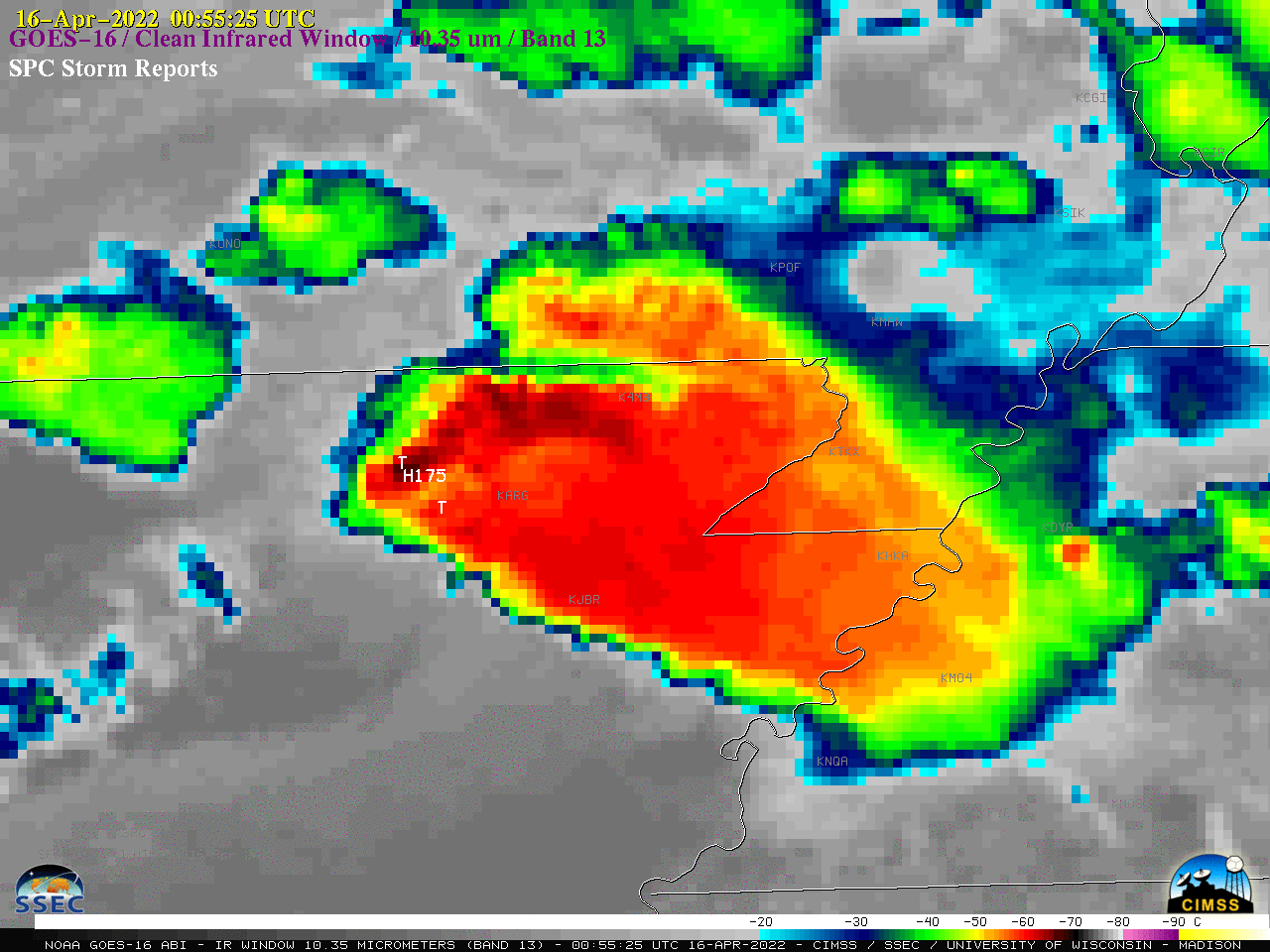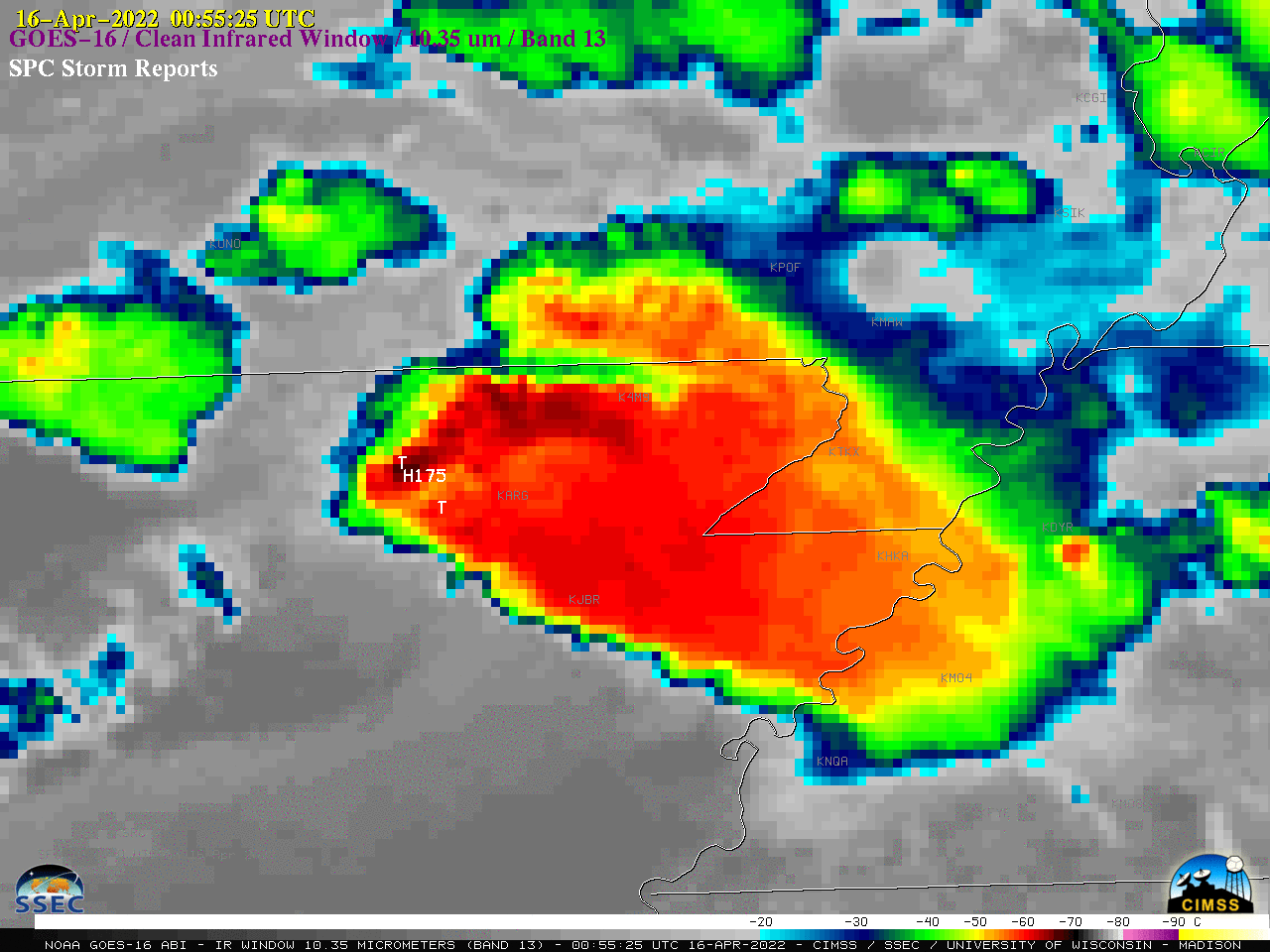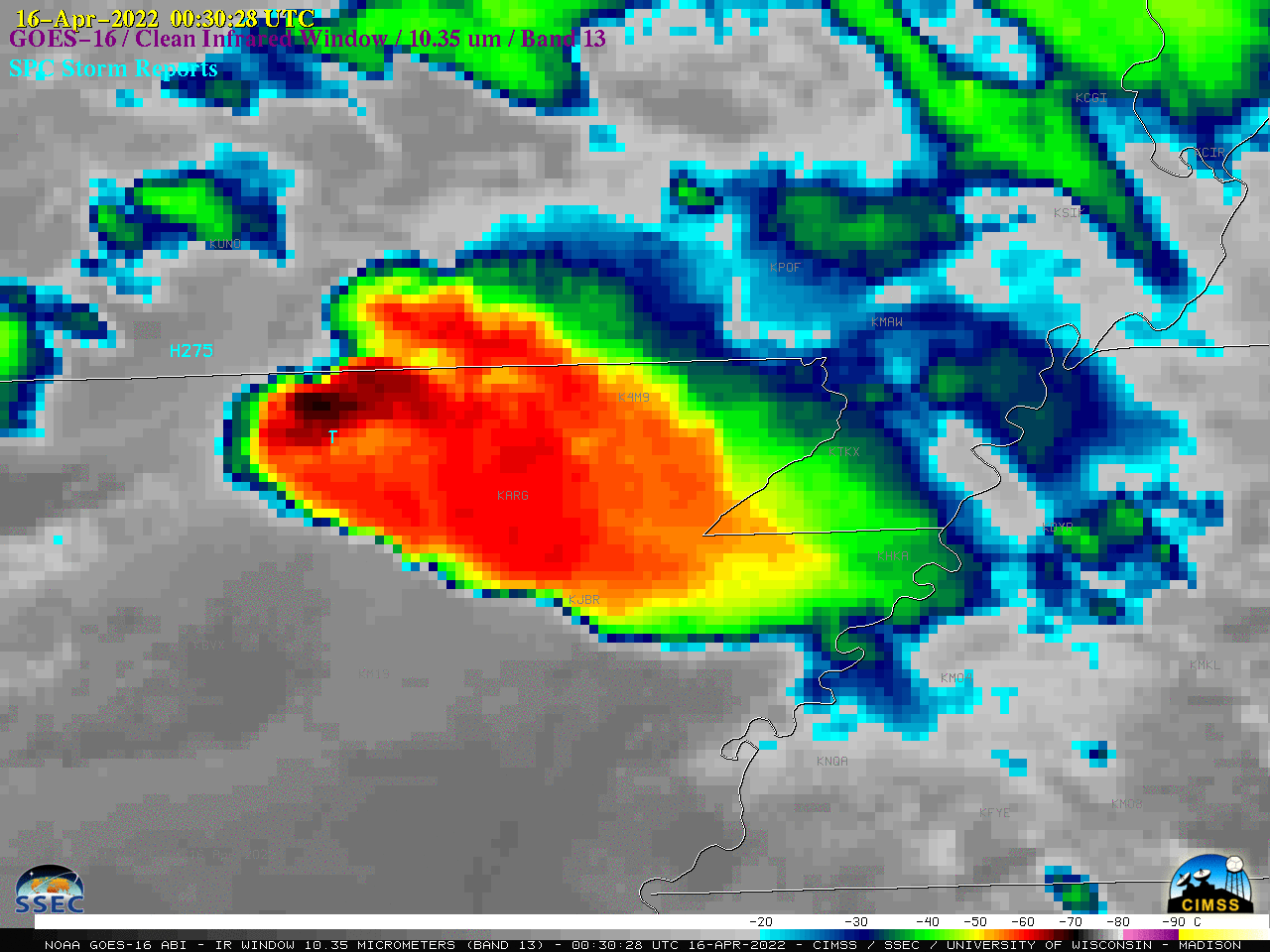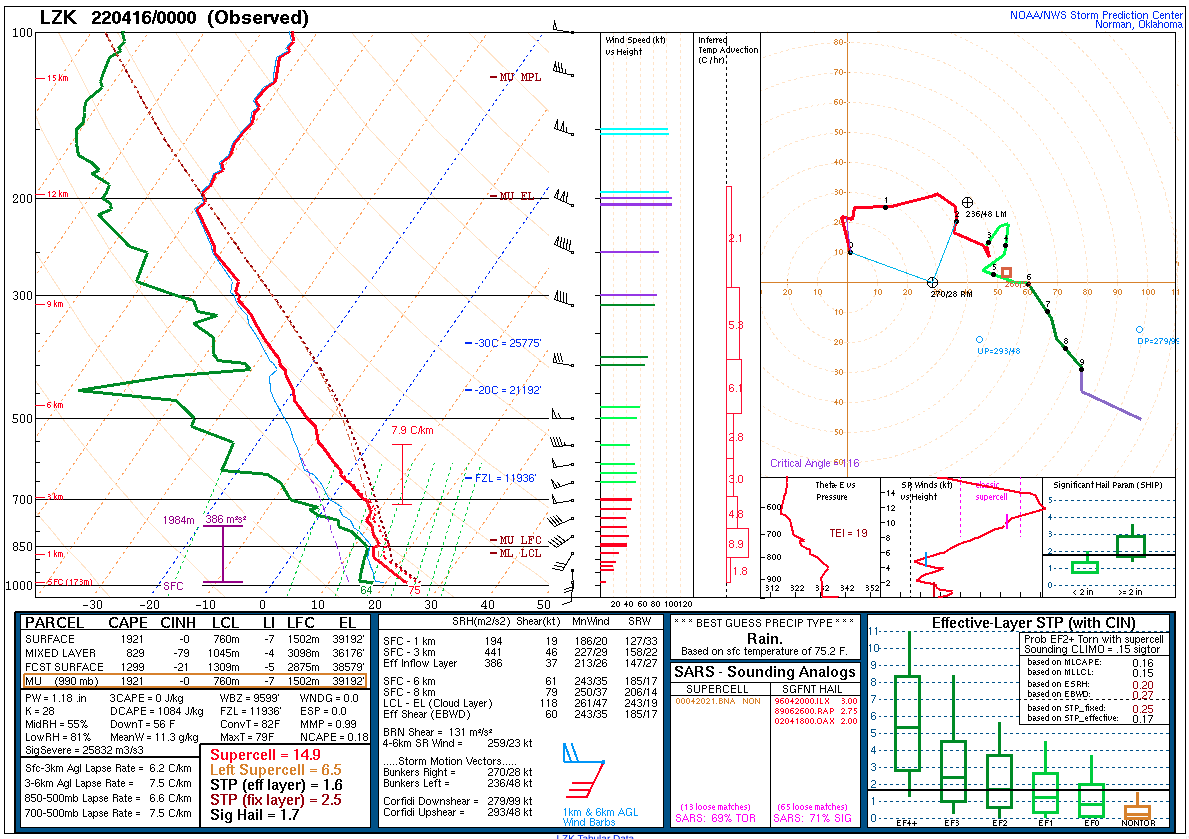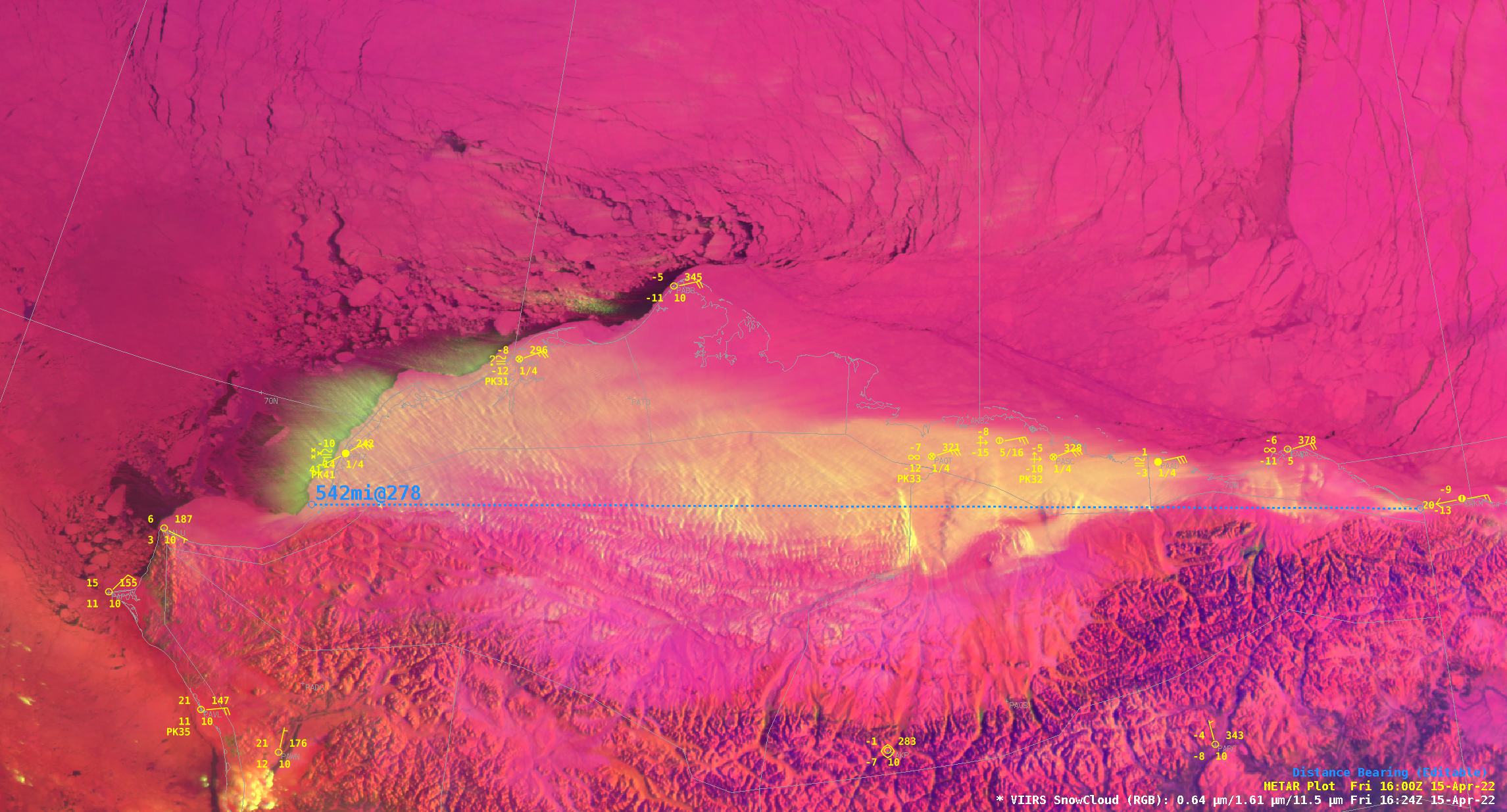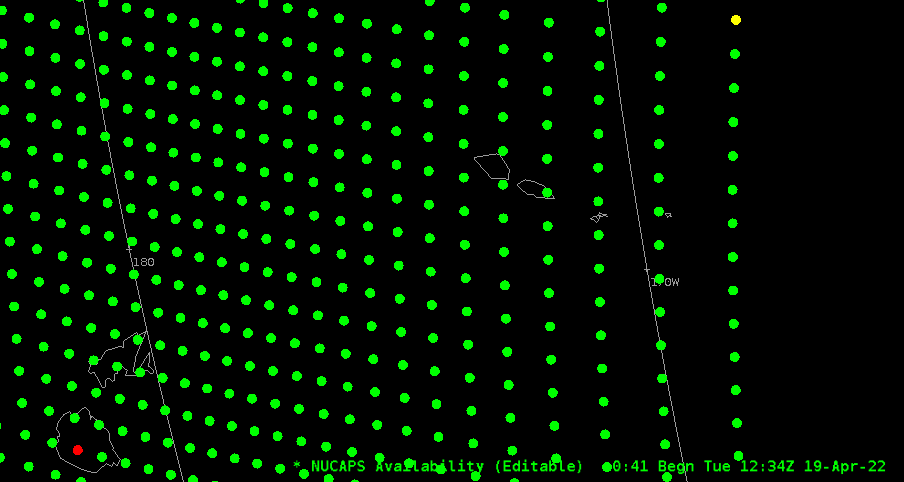
Oceans such as the South Pacific can be a large data void. NOAA-20 NUCAPS profiles can be an important data source to define the state of the atmosphere. The image above shows NUCAPS Sounding Availability from the overnight pass over American Samoa; the largest island of American Samoa, Tutuila, is just west of 170oW in image above. There are green circles just north and just south of Tutuila, signifying locations of NUCAPS profiles associated with successful retrievals. The toggle below compares those two profiles with the 1200 UTC rawinsonde launch (NSTU) from Pago Pago. Good agreement is apparent, although the NUCAPS profiles are smoother.
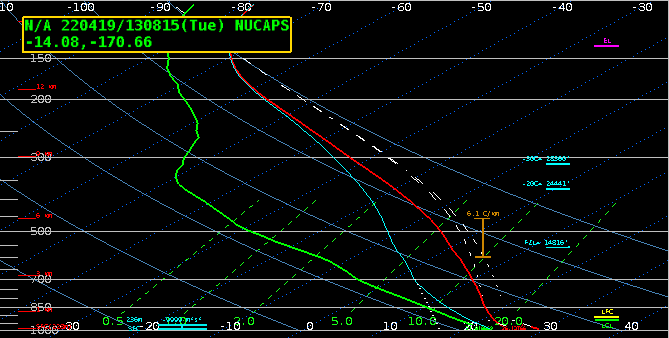
The environment is somewhat dry. This is confirmed by a MIMIC Total Precipitable water mapping, shown below (for 1200 UTC on 19 April 2022) in an image taken from here. The Samoan islands are between two bands of moisture.
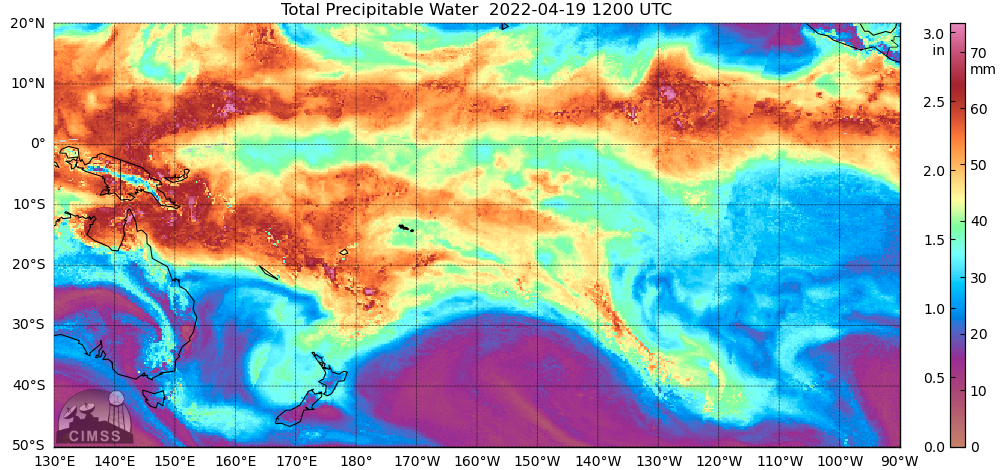
NUCAPS profiles give useful information, but it can be cumbersome to view all individual profiles sequentially. Gridded fields of various properties are available in AWIPS (and online here and here). The toggle below shows a larger view than the topmost image, and it compares gridded Temperature fields at 950 mb, and the 950-700 mb lapse rate. Over the Samoan islands, 950-mb temperatures are faily uniform around 23o C, with “cooler” temperatures (closer to 21o C) just to the northeast. Lapse rates are stable: between 4 and 5 oC/km. As you might expect given the relative dryness and stability, shower chances over American Samoa for 19 April are low.

Use NUCAPS when your weather is approaching from a region void of conventional data.
Imagery in this blog post was in part from the NOAA/TOWR-S instance of AWIPS in the Cloud. Thank you!
View only this post Read Less



